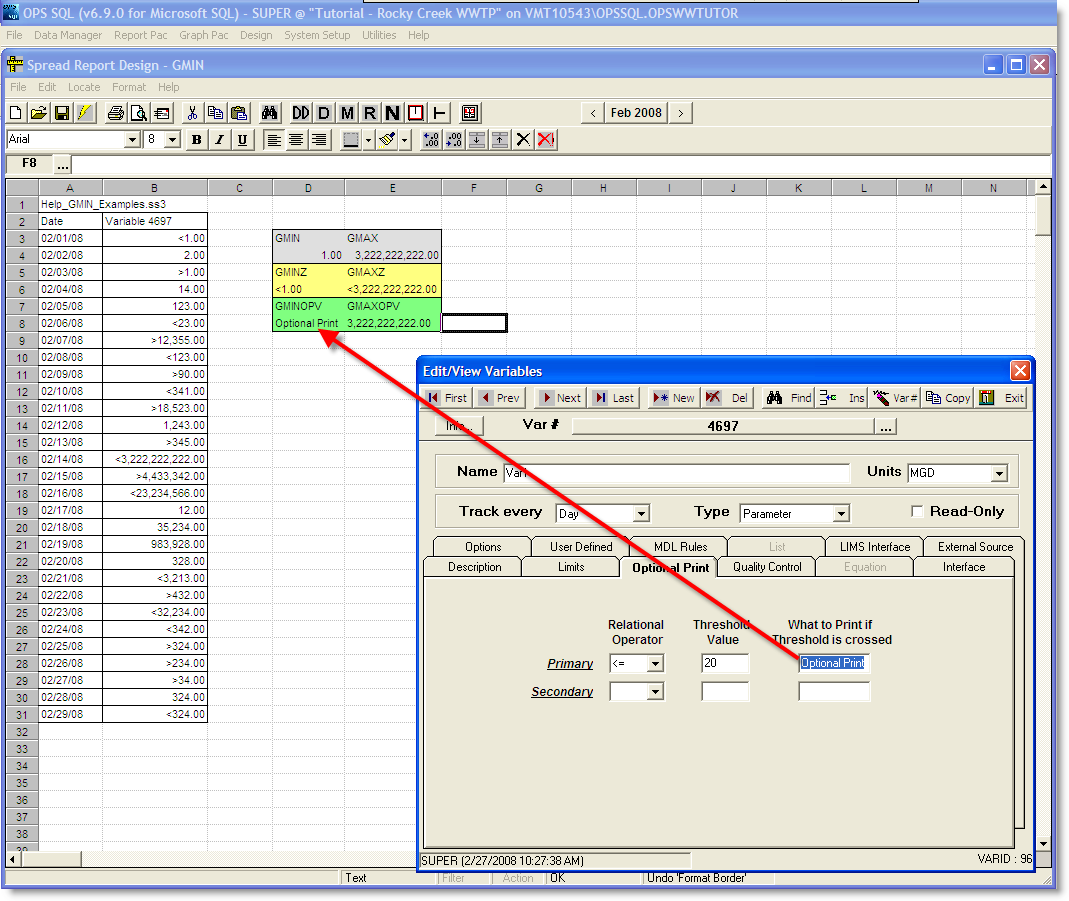GMAXZ returns the maximum along with it's symbol (<, >, <= etc.).
SYNTAX:
GMAXZ(VarNum, GroupOffset/StartDate, Grouping/EndDate, Decimal Places, MDL Rule, optional No Value Print)
VarNum: The variable number to get the maximum for.
GroupOffset/StartDate: Used with the Grouping parameter to set the dates to calculate the stat for. Sets the number of Groups (set by the Grouping Parameter) to be added to set the dates. See examples below. If this field is a date string (i.e. "07/16/2004") or refers to a cell with a date in it, it is assumed to be the start date to calculate the stat for.
Grouping/EndDate: Used to set which dates to calculate the stat for. If the Grouping is a date literal string (i.e. "07/16/2004") or refers to a cell with a date in it, it is assumed to be the end date to calculate the stat for. Common Settings are:
"D" Days
“M” Monthly
"R" Report Dates
“Y” Yearly
Decimal Places: Sets the number of decimal places to be displayed. For variables with decimal places set to "Not Fixed" click here for additional formatting options.
MDL Rule: Ignored in this function. If the maximum value has a symbol that is the symbol that is returned. Please put 1 in this parameter slot.
No Value Print: Sets a string to be displayed if there are no values in the date range. Optional.
NOTES:
In Design, Spread Reports use Locate, Group Summary to place this formula on a report.
EXAMPLES:

GMAXZ(1, 1, "M", 2, 1) returns the max for the report range's first month with 2 decimal places and the symbol.
GMAXZ(1, 1, "M", 2, 1, "No Values") returns the max for the report range's first month with 2 decimal places. Also, if there are no values for the date range, it prints "No Values".
Download Example Template: Help_GMIN-GMAX_Examples.ss3 (Click here for download instructions)
See Also: Spread Functions, GMAXOPV, GMAX